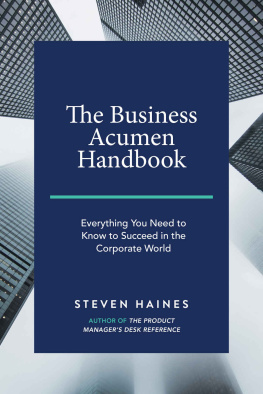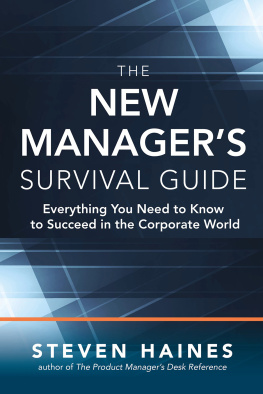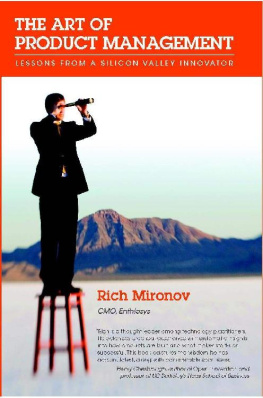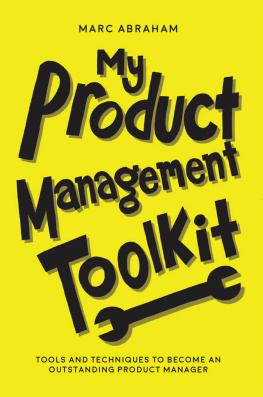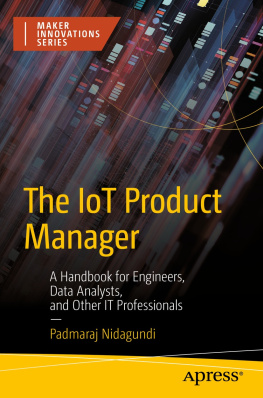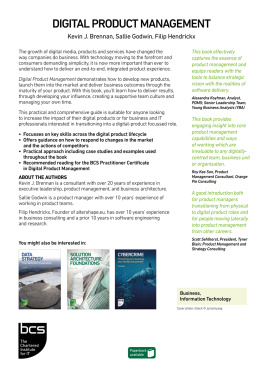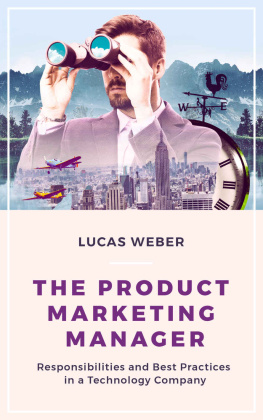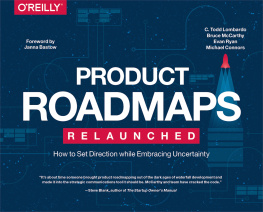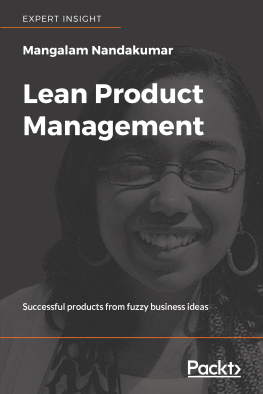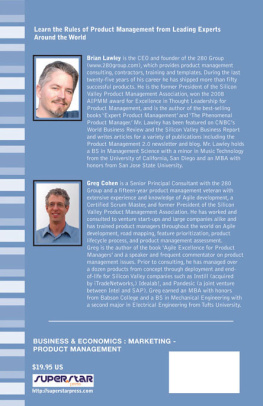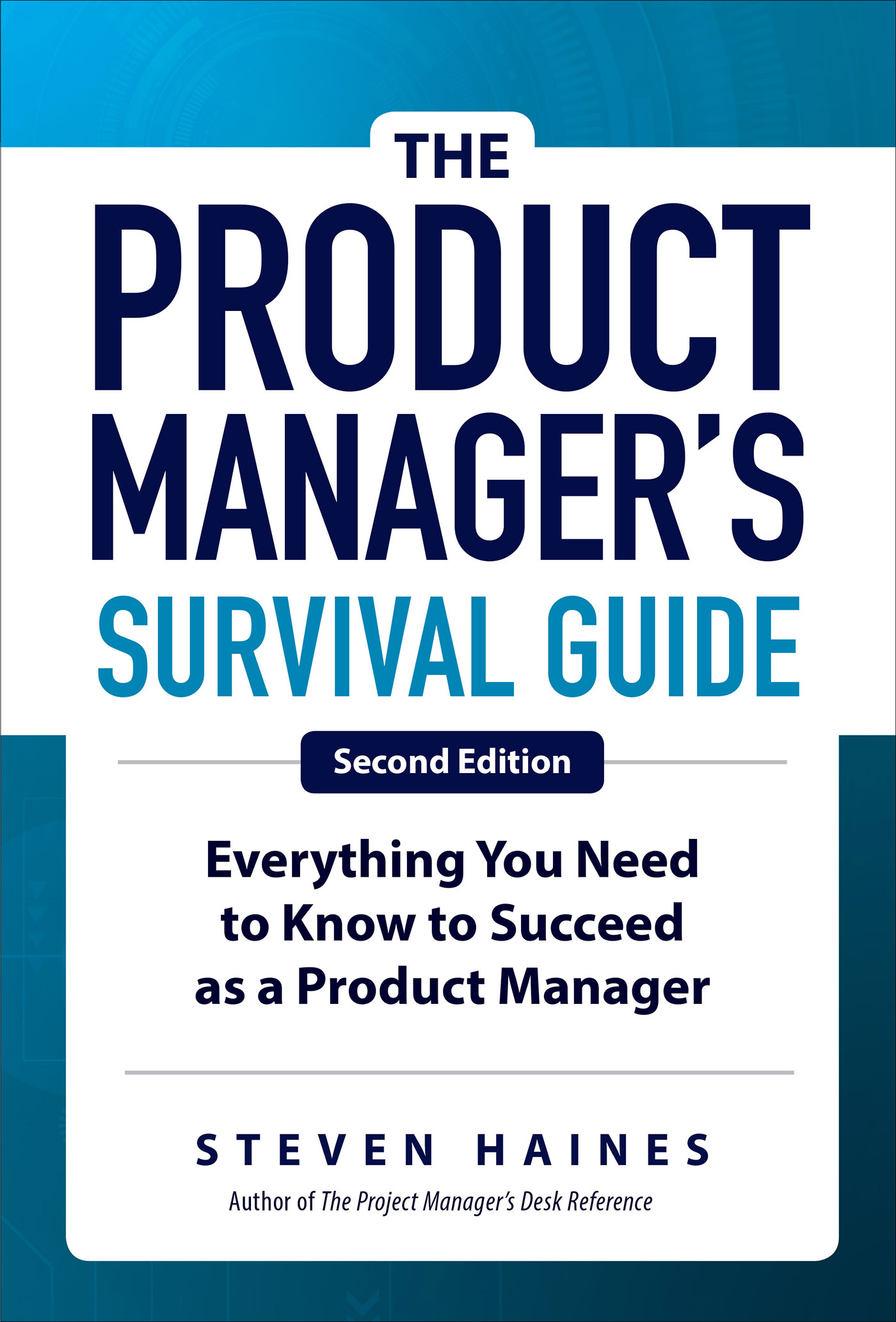
Copyright 2019 by Steven Haines. All rights reserved. Except as permitted under the United States Copyright Act of 1976, no part of this publication may be reproduced or distributed in any form or by any means, or stored in a database or retrieval system, without the prior written permission of the publisher.
ISBN: 978-1-26-013524-4
MHID: 1-26-013524-1
The material in this eBook also appears in the print version of this title: ISBN: 978-1-26-013523-7, MHID: 1-26-013523-3.
eBook conversion by codeMantra
Version 1.0
All trademarks are trademarks of their respective owners. Rather than put a trademark symbol after every occurrence of a trademarked name, we use names in an editorial fashion only, and to the benefit of the trademark owner, with no intention of infringement of the trademark. Where such designations appear in this book, they have been printed with initial caps.
McGraw-Hill Education eBooks are available at special quantity discounts to use as premiums and sales promotions or for use in corporate training programs. To contact a representative, please visit the Contact Us page at www.mhprofessional.com.
TERMS OF USE
This is a copyrighted work and McGraw-Hill Education and its licensors reserve all rights in and to the work. Use of this work is subject to these terms. Except as permitted under the Copyright Act of 1976 and the right to store and retrieve one copy of the work, you may not decompile, disassemble, reverse engineer, reproduce, modify, create derivative works based upon, transmit, distribute, disseminate, sell, publish or sublicense the work or any part of it without McGraw-Hill Educations prior consent. You may use the work for your own noncommercial and personal use; any other use of the work is strictly prohibited. Your right to use the work may be terminated if you fail to comply with these terms.
THE WORK IS PROVIDED AS IS. McGRAW-HILL EDUCATION AND ITS LICENSORS MAKE NO GUARANTEES OR WARRANTIES AS TO THE ACCURACY, ADEQUACY OR COMPLETENESS OF OR RESULTS TO BE OBTAINED FROM USING THE WORK, INCLUDING ANY INFORMATION THAT CAN BE ACCESSED THROUGH THE WORK VIA HYPERLINK OR OTHERWISE, AND EXPRESSLY DISCLAIM ANY WARRANTY, EXPRESS OR IMPLIED, INCLUDING BUT NOT LIMITED TO IMPLIED WARRANTIES OF MERCHANTABILITY OR FITNESS FOR A PARTICULAR PURPOSE. McGraw-Hill Education and its licensors do not warrant or guarantee that the functions contained in the work will meet your requirements or that its operation will be uninterrupted or error free. Neither McGraw-Hill Education nor its licensors shall be liable to you or anyone else for any inaccuracy, error or omission, regardless of cause, in the work or for any damages resulting therefrom. McGraw-Hill Education has no responsibility for the content of any information accessed through the work. Under no circumstances shall McGraw-Hill Education and/or its licensors be liable for any indirect, incidental, special, punitive, consequential or similar damages that result from the use of or inability to use the work, even if any of them has been advised of the possibility of such damages. This limitation of liability shall apply to any claim or cause whatsoever whether such claim or cause arises in contract, tort or otherwise.
CONTENTS
INTRODUCTION
WELCOME TO THE SECOND EDITION OF THE PRODUCT MANAGERS SURVIVAL GUIDE
Early in my career, someone asked me why I liked being a product manager. I had to think for a minute, and then I replied: Because each day is different, I thrive on creating something out of nothing, and I love running a business. I also flourish when I know whats going on across the company and whos doing what with whom and why. I love learning from customers, and I marvel at the knowledge and experience of people who contribute to the creation of great products.
When I wrote the first edition of this book, I thought Id provide a timeless view for aspiring product managers or those who were new to their jobs to create the passion that I think is so important.
I also figured, since business is business, and with my assumption about business practices being timeless, what else would be needed? As I learned, and as youll learn in your product management career, theres a life cycle to everything, including books, products, processes, and companies. Nothing is timeless.
Transformation is the term currently used to describe business evolution. All companies want to achieve long-term improvements in performance. They try to bring this about through changes in mindsets, behaviors, and the capabilities of their employees. Transformation seems to always include the launch of new products, services, and customer interactions. It also embraces new ways in which customers and suppliers interact or engageand today that means faster product design and development, distribution through digital channels, or integration of hardware and software. On a related note, services-based business models continue to evolve that focus on improving outcomes for their customers. From the big-picture point of view, businesses will continue to change, and product managers will continue to be integral players in this evolutionary landscape.
Interestingly, transformation in any organization has different starting points. For product managers, this can be a challenge. For example, you may already be working in a company thats a digital native, or one thats been run from the start as a software company. Or you may be working in a company thats traditional and is incorporating more digital, software, or services-based products in its portfolio. Wherever your company is, or wherever you target your career, youll benefit from a foundational resource like this book to give you a boost.
With this transformation, or any other change that comes your way in the future, it goes without saying that those firms that embrace (or perhaps create) new business models (disruptors) tend to get ahead. Those that dont may find their way onto the downslope of the life cycle curve. Compare the rise of Netflix from an easy-to-rent movie by mail service to a content powerhouse to that of Yahoo or IBM, companies that did not properly harness the needed changes to truly transform themselvesat the right time. Yet, stay tuned, and keep an eye on Netflix to see how it evolves over the next decade or two.
At the heart of success is a product management mindset. It keeps these companies ready for anything as they create new product life cycles from old ones and reinvent themselves along the way. That said, the required sea change in viewpoints and attitudes brings with it a sense of urgency. You can see this every day if you study successful companies and innovative products.
With this updated book, I want to share whats inspired me: leaders of great companies who orchestrate incredible makeovers and product teams who come up with remarkable innovations. I hope to inspire you to step onto the business playing field every day and embrace the opportunity to figure out whats best for your customers and for the company where you work.
Also with this book, I hope to extend my passion for product management to you. I want to provide ways for you to be better and do better. My hope is that this book can serve as a base to unify your thinking about your job, and moreas a springboard for your continued study of product management and progress in your business career.


